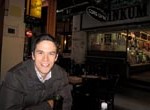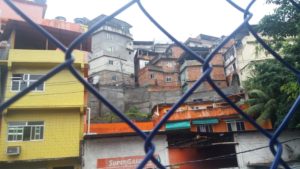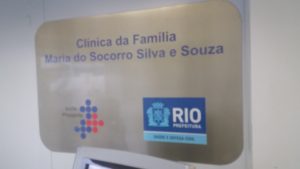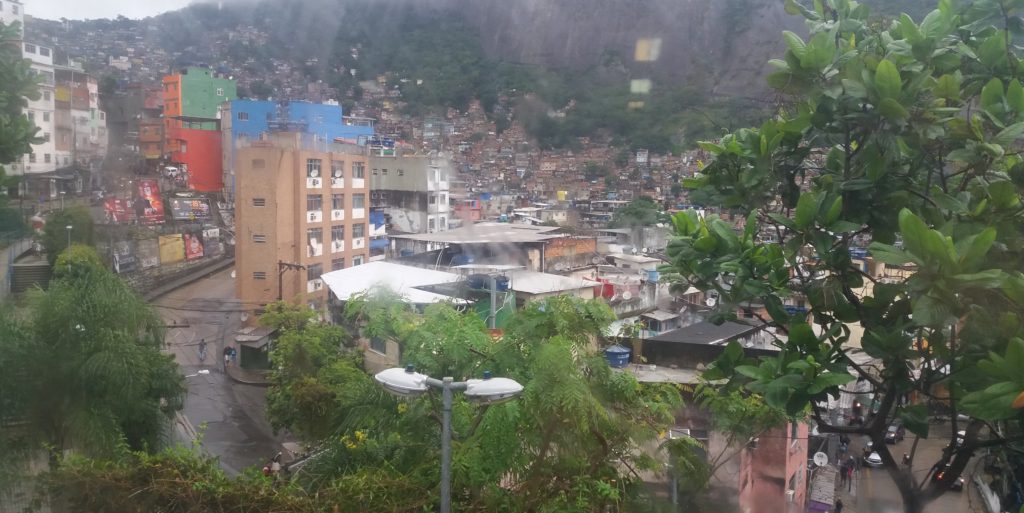 Walking through Rio de Janeiro’s largest slum, Favela da Rocinha, in the pouring rain is probably not the wisest thing for a foreign visitor to do. But on a recent trip to Rio, I was determined not to squander the one chance I had to visit the Maria do Socorro Silva e Souza Family Health Clinic—one of Rocinha’s three primary care clinics that belong to Brazil’s public “Unified Health System.” I went with a group of about 15 GPs from all over the world. The clinic provides care to about 33 000 inhabitants of Rocinha, which has an estimated population of around 100 000, and covers a very well defined area of the favela.
Walking through Rio de Janeiro’s largest slum, Favela da Rocinha, in the pouring rain is probably not the wisest thing for a foreign visitor to do. But on a recent trip to Rio, I was determined not to squander the one chance I had to visit the Maria do Socorro Silva e Souza Family Health Clinic—one of Rocinha’s three primary care clinics that belong to Brazil’s public “Unified Health System.” I went with a group of about 15 GPs from all over the world. The clinic provides care to about 33 000 inhabitants of Rocinha, which has an estimated population of around 100 000, and covers a very well defined area of the favela.
I had heard about the impressive developments in primary care in Rio de Janeiro over the past few years, where primary care coverage has gone from about 4% to about 70% within a decade.
This progress was due to scaling up training programmes in family medicine. Those who complete the programme are considered specialists in “family and community medicine.” It is also due to the creation of “family health teams,” which include a GP, a nurse, and a number of community health agents. Each team in turn is responsible for providing care to about 3000 people living in a very well defined part of the clinic’s catchment area. In total, the Maria do Socorro Silva e Souza clinic has 11 family health teams.
I was in Brazil to attend and give some presentations on behalf of The BMJ at the WONCA World Conference of Family Doctors, which takes place every two years and is a major scientific conference for primary care doctors. During WONCA there were several organised group visits to primary care clinics throughout Rio, but this visit was informal and organised by a fellow Portuguese GP who had done a two week rotation in the Rocinha clinic.
 Our day started off on the wrong foot after the taxi drivers who were meant to drive our group from the conference to the clinic instead dropped us off outside Rocinha. Ironically, the day before, I had chatted with a taxi driver who told me that many taxi drivers refuse to take passengers into the favelas. Even though my colleague was already waiting for the group at the clinic, no one in the group wanted to enter the favela and find the clinic on our own. Instead we agreed over the phone to meet at a designated entry point to the favela with the organiser and two of the clinic’s GPs, who were our hosts throughout the afternoon.
Our day started off on the wrong foot after the taxi drivers who were meant to drive our group from the conference to the clinic instead dropped us off outside Rocinha. Ironically, the day before, I had chatted with a taxi driver who told me that many taxi drivers refuse to take passengers into the favelas. Even though my colleague was already waiting for the group at the clinic, no one in the group wanted to enter the favela and find the clinic on our own. Instead we agreed over the phone to meet at a designated entry point to the favela with the organiser and two of the clinic’s GPs, who were our hosts throughout the afternoon.
I was told that the burden of disease is tremendous in Rocinha. Apart from the burden of non-communicable diseases, there is also a high burden of infectious diseases and of accidents (for example, falls, burns, etc). The incidence of tuberculosis is 11 times higher in Rocinha compared to the national incidence.
Community health agents, who are the eyes and ears of the clinic on the ground, must be residents of Rocinha and they have a versatile role. They are, for example, responsible for taking tuberculosis medication to a patient’s home and making sure they take it (directly observed treatment). They also check on at-risk groups, such as patients with diabetes or women with high risk pregnancies. GPs are actually not meant to do home visits without being accompanied by a community health agent.
 At the clinic the first thing I notice is the community agents working as receptionists. The facilities are modern, spacious, and offer a portfolio of resources and services that may well humble many European counterparts. Apart from medical and nursing care, the clinic offers dental medicine, psychology, psychiatry, nutrition, acupuncture, and physiotherapy services.
At the clinic the first thing I notice is the community agents working as receptionists. The facilities are modern, spacious, and offer a portfolio of resources and services that may well humble many European counterparts. Apart from medical and nursing care, the clinic offers dental medicine, psychology, psychiatry, nutrition, acupuncture, and physiotherapy services.
Some GPs underwent special training so that they could offer “community therapy,” which is a Brazilian born approach of using group sessions to come up with solutions for problems through mutual sharing of experiences. Patients benefit from access to diagnostic and imaging tests thanks to the adjacent emergency unit (“Unidade de Pronto Atendimento” or UPA), a kind of community based, small emergency department that runs 24 hours a day. After triage at the UPA, patients perceived as having indication for primary care assessment may actually be referred to the clinic.
I didn’t get to directly ask the family medicine trainees what their experience of training at Rocinha is like and whether they’re satisfied. Rocinha is a difficult and challenging environment to work in as a GP due to its mixture of deprivation, a high burden of disease, and the area’s rugged geography. But this also makes it an ideal training ground for primary care.

I left satisfied with the thought that, for once, the inverse care law does not seem to apply in this community. Empowered by the appropriate training and widespread resources available, GPs in Rocinha seem prepared and motivated to bring medical care to those who need it the most. At a time when so many GPs in places such as the UK are disillusioned with the profession, we can surely look to Rio de Janeiro for inspiration.
Tiago Villanueva is assistant editor, The BMJ. He also works as a locum GP in Portugal’s National Health Service. His travel expenses to Brazil were covered by The BMJ.
Acknowledgements: Thank you to Dr Marceli and Dr Marcos for being such wonderful hosts.
